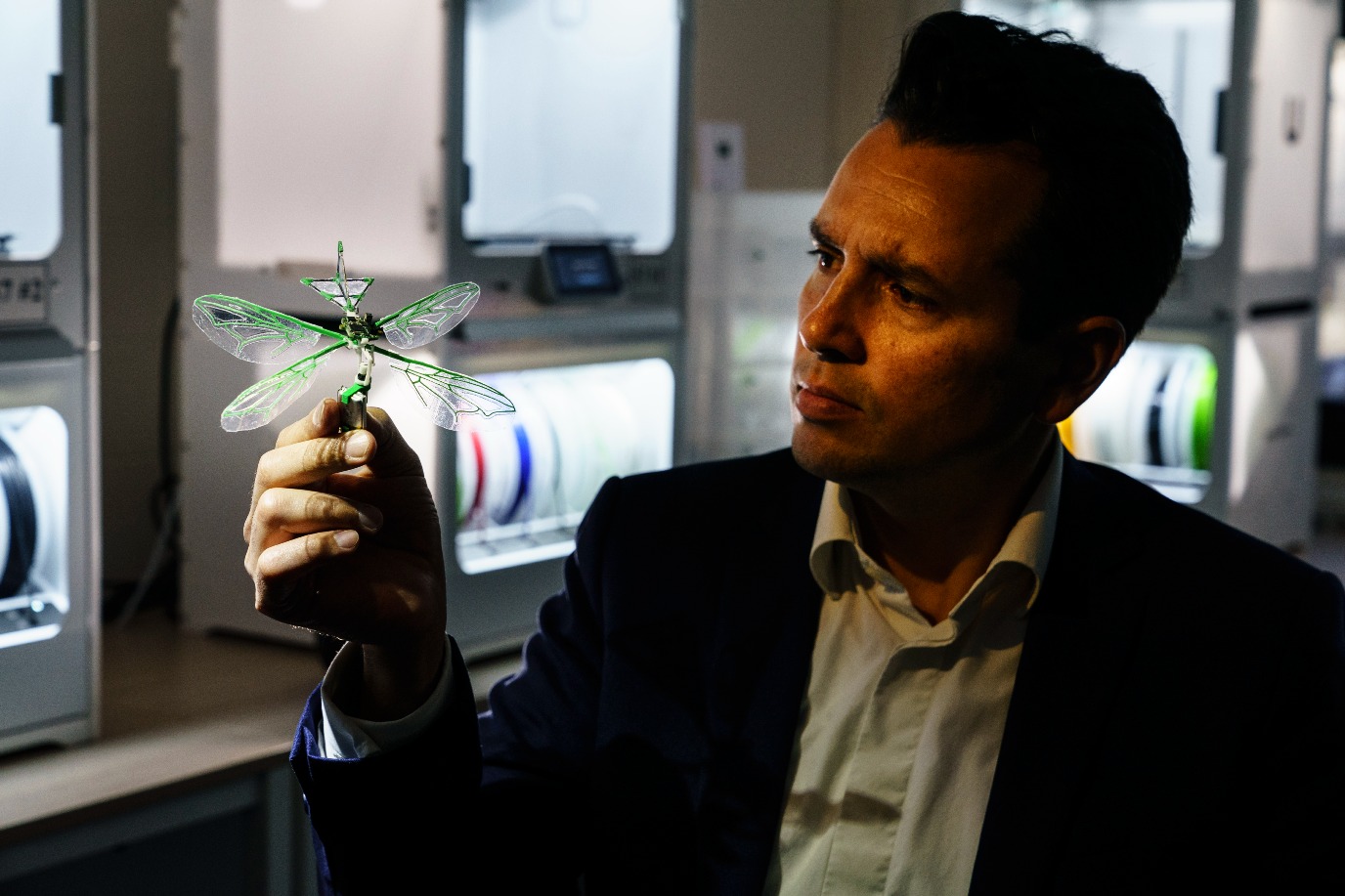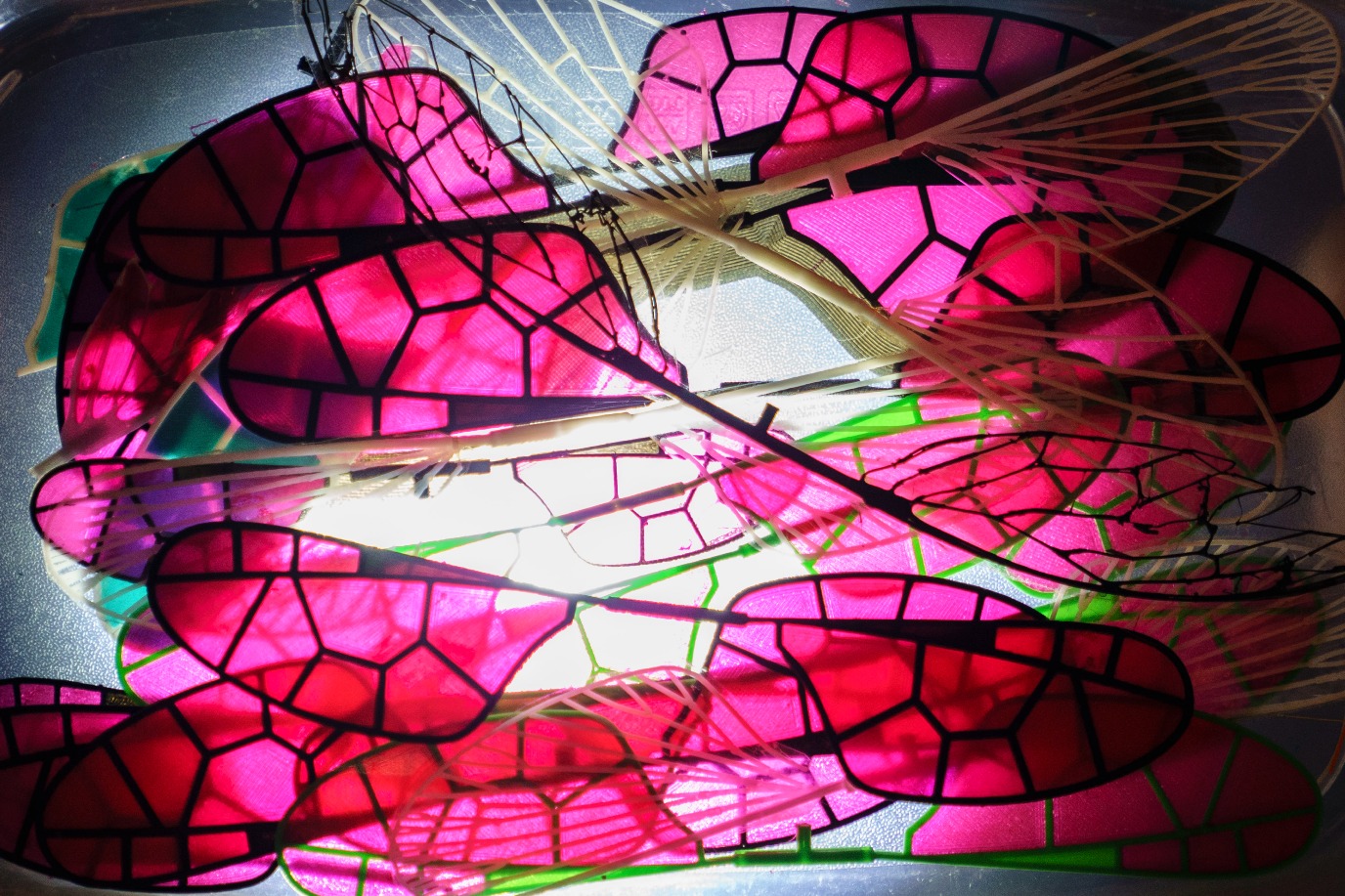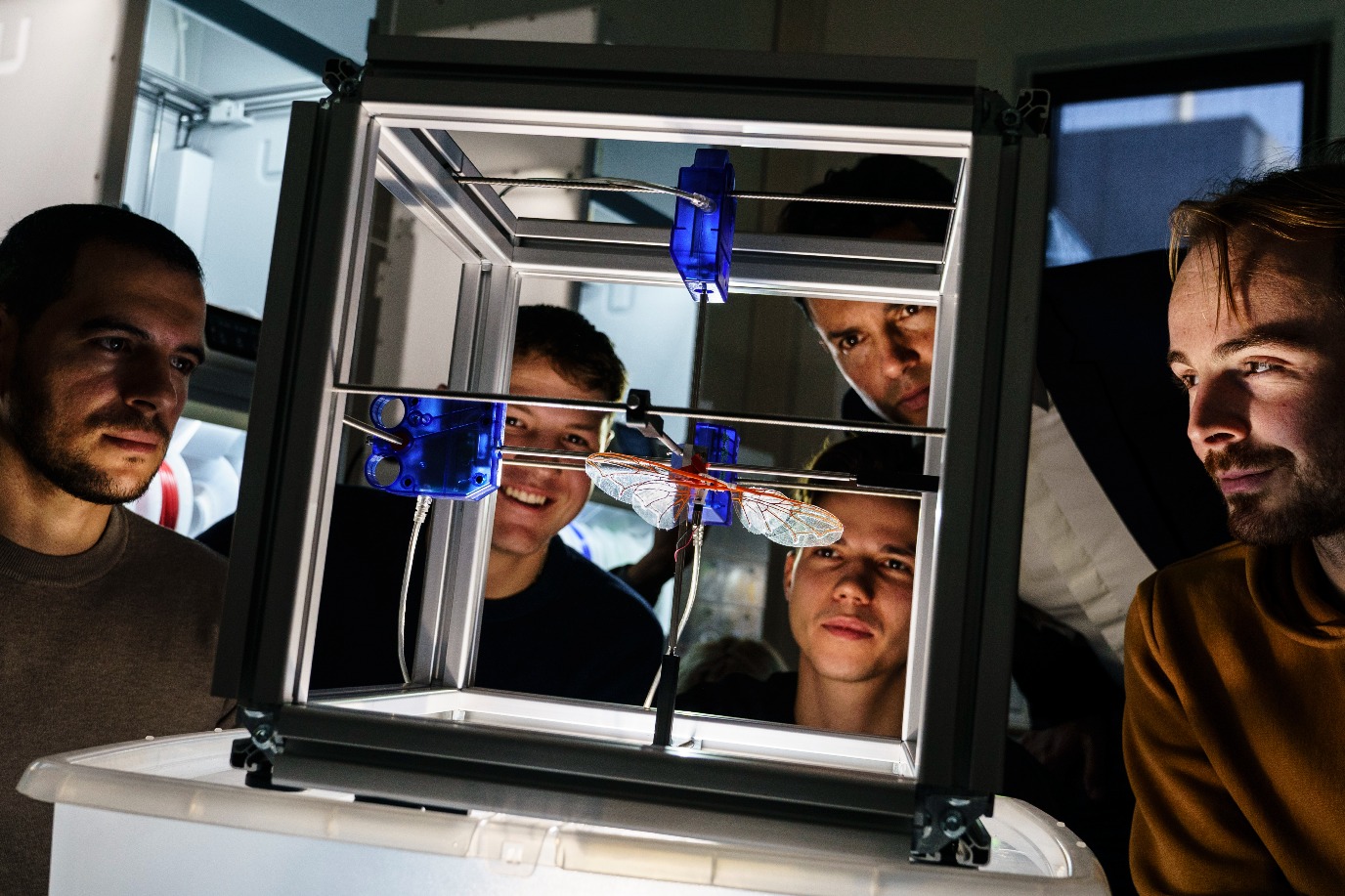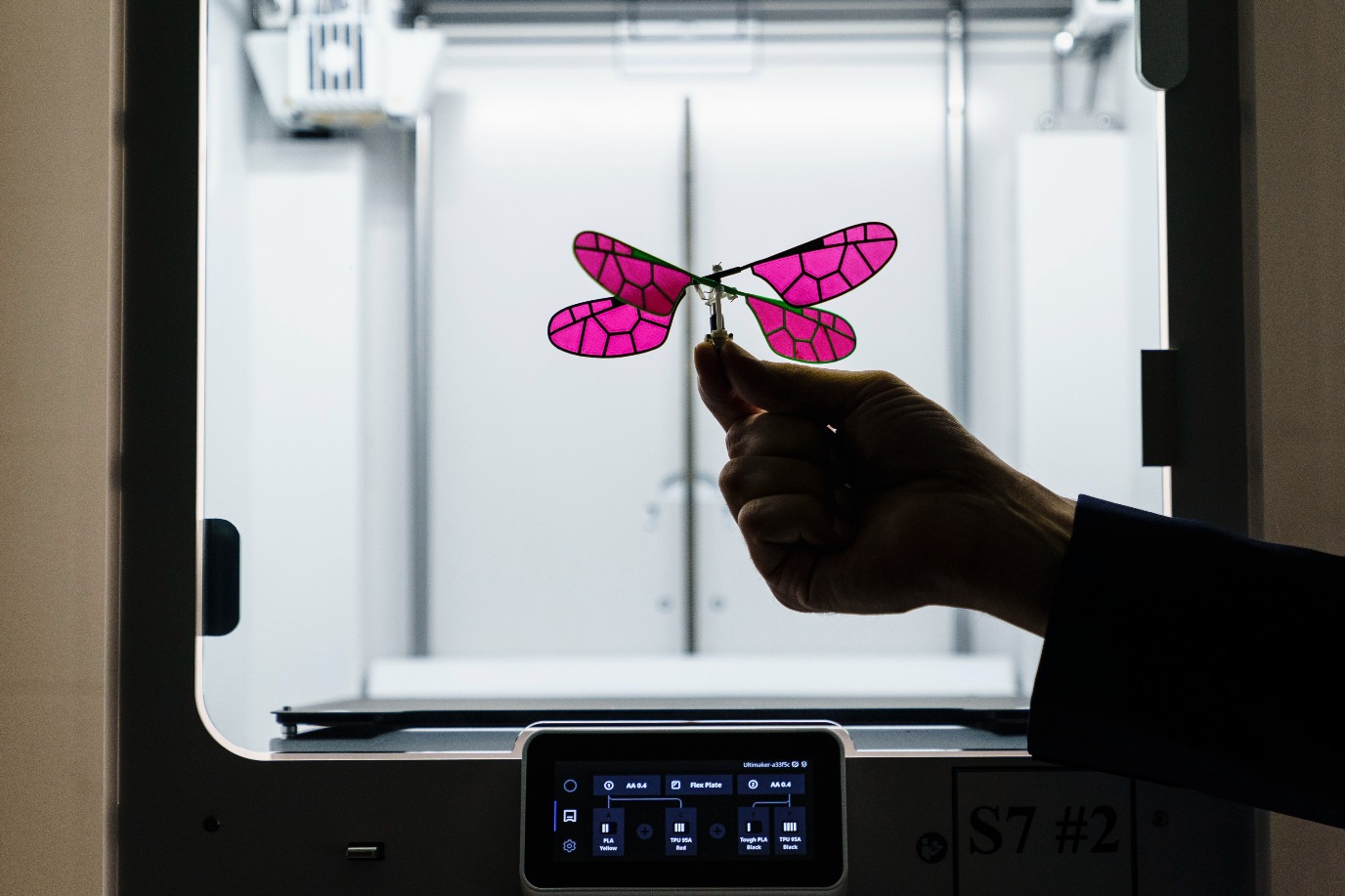As efficient as a house fly
‘In nature, most flying animals rely on flapping movements,’ explains Mauricio Muñoz Arias, assistant professor of Automation and Control Systems. ‘I believe that ultimately flapping is a much more efficient technique than the rotational movement used in drones.’ Together with his students, Muñoz Arias developed a featherlight device that flaps its wings like an insect: an ornithopter. The device can fly a pre-programmed trajectory or it can be controlled remotely from a laptop.




The tiny ornithopter weighs only nine grams but has enough lifting power to carry another six grams. ‘You could use it to deliver medicine to places that are difficult to reach, for example in case of a natural disaster,’ Muñoz Arias explains. ‘Or you could attach a camera onto it and have it inspect crops for agricultural purposes.’
Muñoz Arias began this project with an entirely different motivation: he wanted technical degree students to work more with their hands. So, he gave them a kit with 3D-printed parts, which they had to assemble in such a way to make it fly. They held competitions where the device that had the best lifting power would win.
As the initial student competitions gained attention and demonstrated the ornithopter's potential, the project naturally evolved into a research venture. The desire to explore unanswered questions about flight efficiency and wing design resulted in a series of Bachelor’s and Master’s theses. Muñoz Arias: ‘We tested the design of the wings of a regular house fly, a cicada, a moth, and a bee. The wings of a house fly were by far the most efficient in terms of energy expenditure and lift generation.’
The result is a ‘creature’ that is unique in its kind: other ornithopters have been developed at Harvard University and South Korea’s Konkuk University, but they are in an entirely different weight category. ‘And this is all thanks to the fact that so many students came to help,’ says Muñoz Arias. ‘They always come up with fresh ideas!’
Text: FSE Science Newsroom | Charlotte Vlek
Photos: Reyer Boxem
Every two weeks, UG Makers puts the spotlight on a researcher who has created something tangible, ranging from homemade measuring equipment for academic research to small or larger products that can change our daily lives. That is how UG researchers contribute to the solutions for big scientific and societal challenges.
For decades, engineering teaching and research at the UG has been part of a wide array of strong disciplines, and from a national point of view, our collaboration with the four technical universities is becoming more and more intensive.
Previous portraits of Makers can be found on the overview page.
More information
| Last modified: | 02 April 2025 10.31 a.m. |
More news
-
15 April 2025
1.5 million funding from Province of Groningen for innovative technology in the region
The University of Groningen will receive nearly 1.5 million euros in funding from the Province of Groningen to assist entrepreneurial academic researchers in developing innovative ideas into a startup.
-
15 April 2025
Nathalie Katsonis wins Ammodo Science Award 2025
For her pioneering research on molecular systems, Nathalie Katsonis receives the Ammodo Science Award for fundamental research 2025.
-
15 April 2025
Fundamental research with life-size effects
Nathalie Katsonis has won the Ammodo Science Award for Fundamental Research. She develops adaptive molecular materials and studies the chemical origins of life, which in turn yield insights for vaccines and clearing up oil spills at sea.
